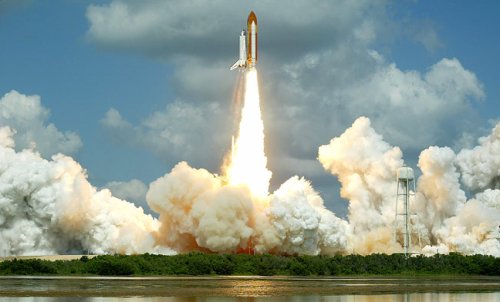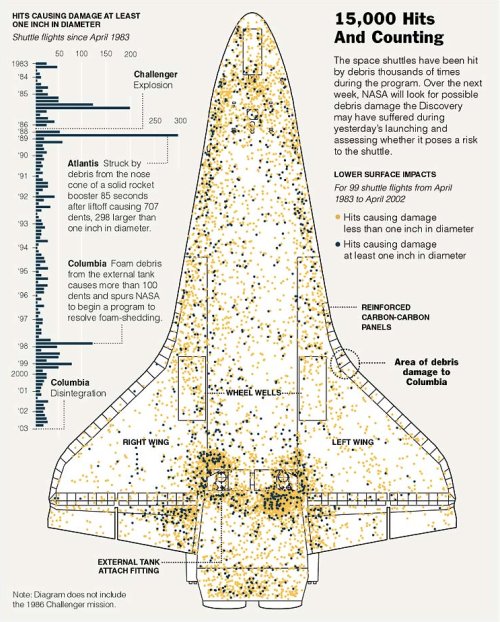
(c) Keith Meyers/The New York Times
Whilst observers held their breath as the space shuttle Discovery blasted into space last week hundreds of scientists at NASA monitored every conceivable aspect of the take off after the Columbia accident which took the lives of all seven crew members.
To assist in this analysis NASA has assembled a database containing information about more than 15,000 recorded debris hits from shuttle flights since 1983 (see graphic below). Unfortunately there are no clear-cut answers to the problem and indeed the fragility of the craft is still a matter of speculation.

(c) Columbia Accident Investigation Report, NASA
As to most people space, and what we may find out there, fascinates me but it seems such a shame that exploring the final frontier may be put on hold for a significant amount of time because the aging shuttle craft are no longer up to the job. Right now the idea of humans landing on the Moon, let along Mars, any time soon seems pretty laughable.
Update: (02/08) The BBC are reporting that Discovery needs emergency repairs – ceramic strips have been spotted sticking out of the heastshield tiles of the shuttle, and NASA are worried they could cause overheating on re-entry. A spacewalk will be carried out to remove the offending material.

Reply